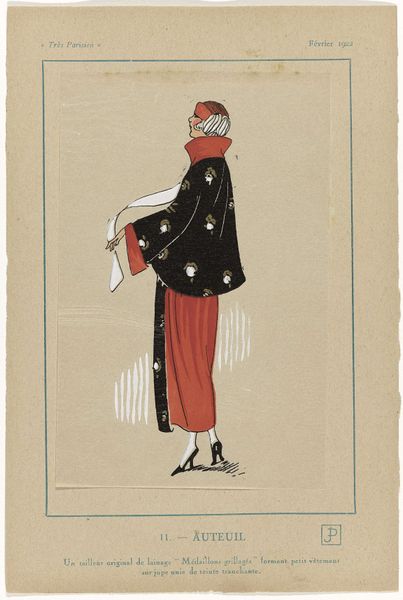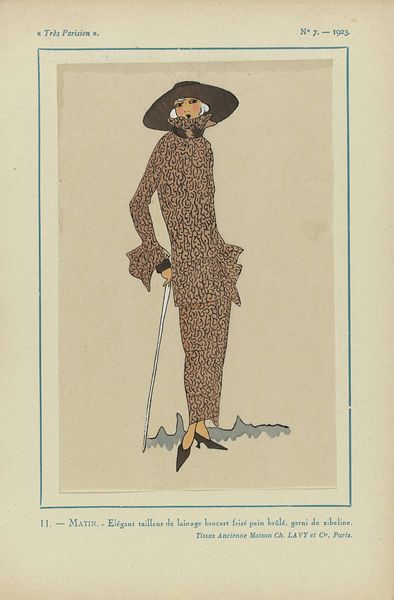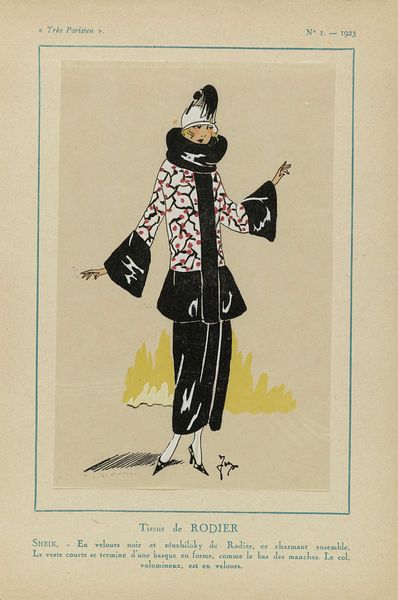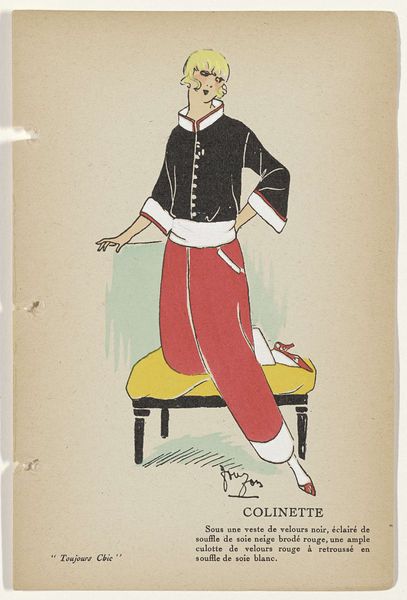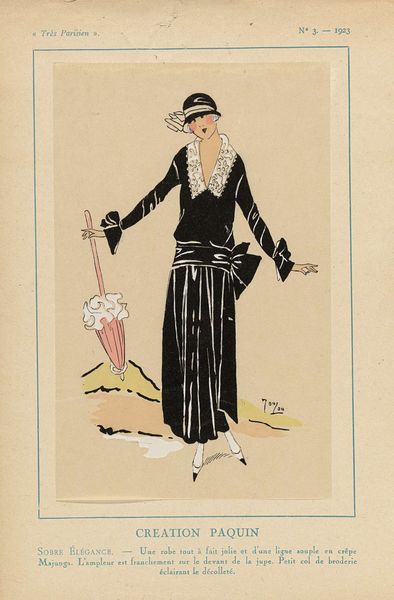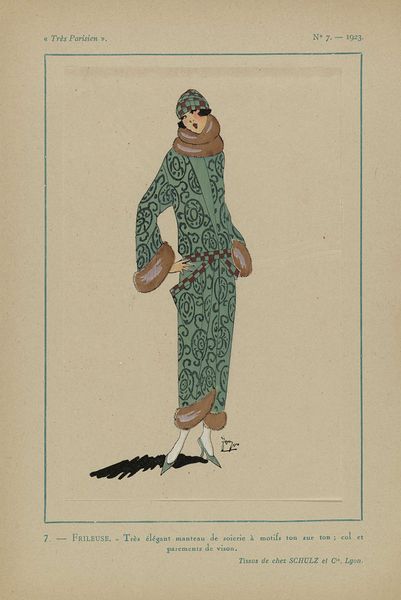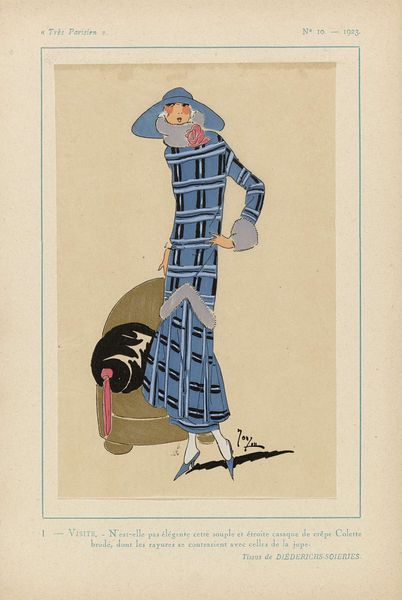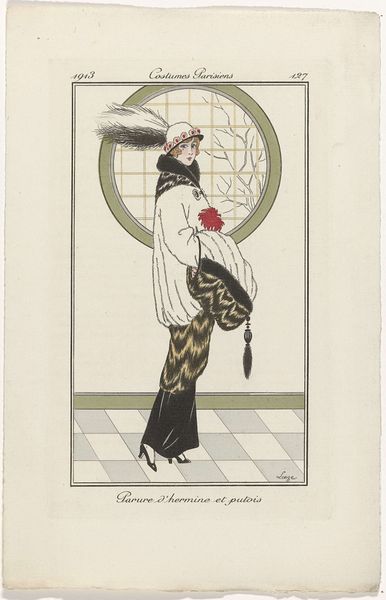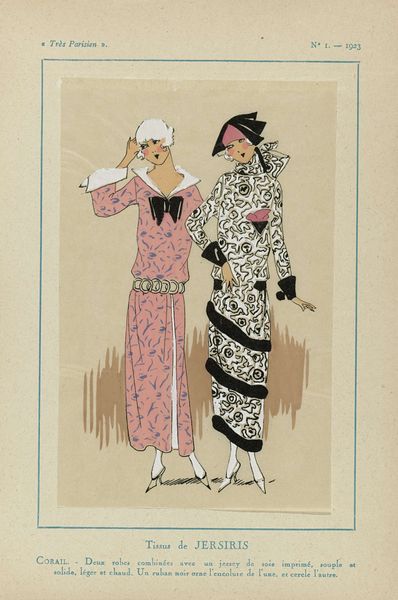
Très Parisien, 1923, No 7: 3. - CHAMPS-ELYSÉES - 1. Robe-manteau... 1923
0:00
0:00
graphic-art, print, poster
#
art-deco
#
graphic-art
# print
#
flat colour
#
sketchbook drawing
#
watercolour illustration
#
poster
#
watercolor
Dimensions: height 269 mm, width 180 mm
Copyright: Rijks Museum: Open Domain
Curator: Before us is a print from 1923 entitled "Très Parisien, No. 7," attributed to an anonymous artist and residing in the Rijksmuseum collection. The scene presented evokes the bustling elegance of the Champs-Élysées. Editor: It has an effortless stylishness. The palette is restrained but so elegant, like a muted jazz composition. The lines are so confident, it screams chic! Curator: Observe how the artist employs flat color planes and distinct outlines, quintessential characteristics of the Art Deco aesthetic that gained momentum in the early 20th century. This visual approach reduces depth, emphasizing the ornamental quality of the composition. Editor: Look closely at the textile representation. You have what seems like a mother wearing an expensive wool "robe-manteau" patterned to look like expensive silk next to a young girl whose coat appears to be corduroy and wool. We have distinct classes presented to us using what would have been current textiles from the era. Curator: Indeed. Semiotically, the patterning on the "robe-manteau" performs as a signifier of high social status, reinforced by the woman’s posture and attire. And the choice to portray these subjects with such precise detail in their garments is striking. The materials feel integral to conveying the image's intention. Editor: It’s not just the intention, but I would also argue a record of production itself! Printmaking made disseminating such images, along with the very idea of high style accessible. This watercolor illustration feels as if it bridges fine art with commodity culture. Curator: The reduction of the subjects to almost two-dimensional forms accentuates the modernity of the piece, aligning it with the broader artistic currents that redefined representation in the wake of post-WWI realities. Editor: Well, looking closer now, I see something beyond its graphic quality. There is the actual labor embedded in textile manufacturing itself! In some way, this represents more than luxury—the system and human input involved. Curator: It provides such insight. Considering it's not merely a fashionable statement, this analysis prompts questions about art's value and influence. Editor: Yes, I’ll definitely leave this piece considering labor, materiality and consumer culture intersecting so vividly in the 1920s.
Comments
No comments
Be the first to comment and join the conversation on the ultimate creative platform.

